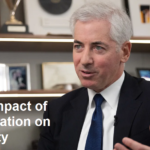On Monday, March 24th, 2025, reports emerged detailing the significant spread of wildfires across Japan, particularly impacting two prefectures in the western region surrounding the city of Minami. This incident serves as a stark reminder of the increasing vulnerability of Japan, and indeed the global community, to the devastating consequences of escalating wildfire seasons. Understanding the potential contributing factors and long-term ramifications of these fires is crucial for formulating effective mitigation and preventative strategies.
Several elements likely converged to create the conditions conducive to this expansive fire. Climatic change, a global phenomenon with increasingly localized impacts, plays a critical role. Rising temperatures and prolonged periods of drought can significantly desiccate vegetation, transforming vast areas into readily flammable tinderboxes. In Japan, characterized by dense forests covering a significant portion of its landmass, the risk of ignition and rapid fire spread is demonstrably heightened under these conditions.
Furthermore, human activity, both intentional and unintentional, often serves as the initial spark. Carelessness with campfires, discarded cigarettes, and improperly maintained machinery can all inadvertently trigger wildfires. In some instances, deliberate acts of arson cannot be ruled out, adding another layer of complexity to the problem. While the specific cause of the 2025 fires remains to be determined, understanding human behavioral patterns within vulnerable regions is paramount to developing effective prevention campaigns.
The environmental consequences of widespread wildfires are multifaceted and far-reaching. The immediate impact is the destruction of forests, leading to significant losses of biodiversity and habitat. This deforestation disrupts ecological balance, potentially leading to long-term shifts in species distribution and ecosystem functionality. Furthermore, the smoke and particulate matter released during wildfires contribute significantly to air pollution, posing serious health risks to human populations, particularly those with pre-existing respiratory conditions. The economic costs associated with containing wildfires, rebuilding damaged infrastructure, and addressing public health concerns are also substantial, placing a significant strain on national resources.
Beyond the immediate effects, wildfires can also exacerbate climate change, creating a dangerous feedback loop. The burning of forests releases massive amounts of stored carbon dioxide into the atmosphere, contributing to the greenhouse effect and further accelerating global warming. This increased warming, in turn, elevates the risk of future wildfires, creating a cycle of destruction that is difficult to break.
Addressing the growing threat of wildfires requires a comprehensive and multi-faceted approach. Firstly, proactive measures aimed at mitigating the risk of ignition are essential. This includes implementing stringent regulations regarding open fires and the use of machinery in forested areas. Public awareness campaigns should also be prioritized, educating citizens about the dangers of wildfires and promoting responsible behavior.
Secondly, effective fire suppression strategies are crucial. This involves investing in advanced firefighting equipment, training specialized personnel, and developing robust communication networks to facilitate rapid response and coordination. Furthermore, strategic forest management practices, such as prescribed burning and thinning, can help to reduce fuel loads and create firebreaks, limiting the potential for widespread conflagrations.
Finally, a concerted effort to address the underlying causes of climate change is paramount. This requires a global commitment to reducing greenhouse gas emissions through transitioning to renewable energy sources, promoting energy efficiency, and implementing sustainable land management practices.
The 2025 wildfires in Japan serve as a crucial wake-up call, highlighting the urgent need for proactive measures to mitigate the escalating threat of wildfires. By understanding the complex interplay of climatic change, human activity, and ecological vulnerability, we can develop effective strategies to protect our forests, safeguard public health, and ensure a more sustainable future. Only through a comprehensive and collaborative approach can we hope to effectively address this growing global challenge.












